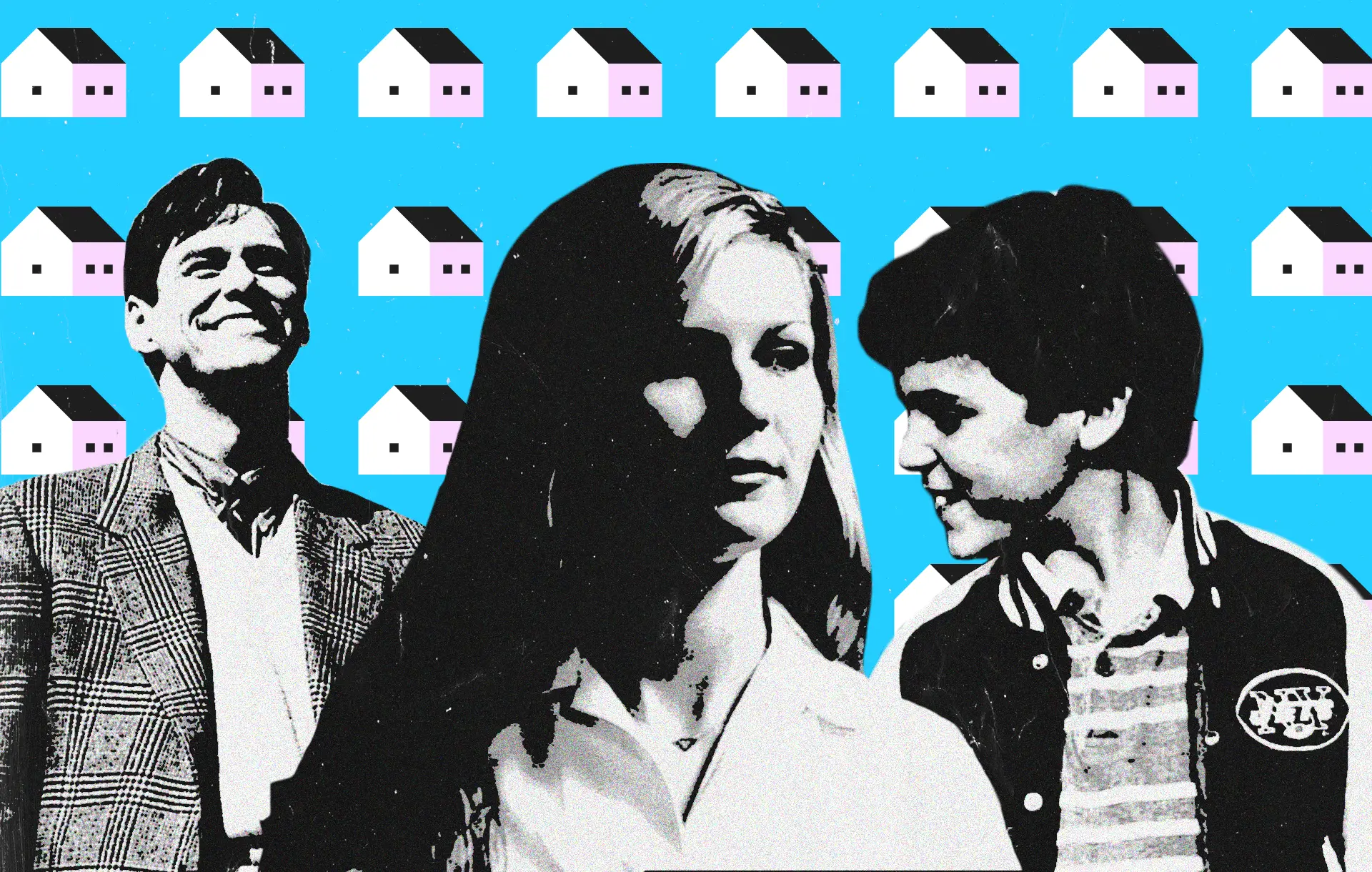Suburbia has enthralled filmmakers in the visual mediums of film and television since the creation of the post-war nuclear family in the 1950s, serving as a setting, motif, and breeding ground for themes, critiques, and analyses of the distinct and selective culture onscreen which Suburbia has spawned among our pop culture, sociopolitical, and economic zeitgeists. Levittown served as the prototype for large, ticky-tacky neighborhoods that began to pop up over the course of next decade like zits on a sugar-laden teenager on the outskirts of American cities.
Suburbia has enthralled filmmakers in the visual mediums of film and television since the creation of the post-war nuclear family in the 1950s
From an insider’s perspective, these suburbs created a bubble of willful naïveté for many of its residents. From an outsider’s perspective, they often served as another form of segregation in America. America would have another Suburban boom during the Reagan era and its return to traditional values, some three decades later. Although this new iteration of suburbia was incrementally more inclusive, it remained, in large part, more of the same result as America’s attempt to rebuild and reshape its narrative after World War II. Residents grew bored of the mundanity, began to see through their protective bubble, and existential dread often replaced the dog-eat-dog workforce of the generation prior.
Throughout the years, for obvious and understandable reasons, Suburbia has been satirized in various forms on film and television, it has served as a multitude of allegories for larger issues, and it has been negatively portrayed through nightmare-ish hyperboles. However, for every negative on screen portrayal of Suburbia, an endearing homage to the nostalgia of a rose-hued childhood, a cloying tribute to the mystical oddities and mysteries of the elusive, special spots and memories among the neighborhoods and their atmospheres, and a sugar-coated, one-sided depiction of a particular demographic of Americans, and every degree of in between the polar opposite depictions.
Negative:
Halloween (1978)
The scene during which Laurie Strode runs from Michael Meyers throughout Haddonfield, banging on the doors of each resident, shows the apathy and atomization of each nuclear family unit, with the destruction of the community as an essential theme of this scene and the larger film as a whole. Nobody answers, highlighting the collective anxieties residents have about Suburbia – that not only is Suburbia, as aforementioned, riddled by the onset of the satanic panic at this point in time, but it seemingly confirms our suspicions that each house in our “friendly” suburb is a self-contained nucleus, and each family in which they reside is further isolated from outside community relations, particularly after night; they are indifferent to the sufferings of anyone outside their own castle. The whole marketing point of the suburbs is to get away from the invasiveness of the city and enjoy some privacy. As Lorie knocks, this “Don’t disturb us, we’ve earned this privacy” mentality kicks it. The homes may as well be empty, underscoring the isolation of the suburbs.
The Truman Show
Peter Weir’s The Truman Show is a biting satire of the reality TV generation, almost uncannily predicting what entertainment would evolve into – a voyeuristic glimpse into the lives of damaged people… for your viewing pleasure. Released in 1998, the film was decades ahead of its time. The Truman Show is also an allegory for suburban complacency, claustrophobia, and paranoia. Truman Burbank follows the same, exact routine, day in and day out, safely living in his figurative and literal bubble of naïveté. He grows reckless of this repetition. He attempts to escape, but finds it virtually impossible – this breakdown is akin to a midlife crisis. Residents set up roots in suburbs for generations, eventually growing weary of the predestined path that befalls them, begotten by years of routine. Consumerism, as materialized through his show’s many product placements, is ensured to keep the residents of its suburbs stationary for the long-run.
Poltergeist
Although Poltergeist is a film that plays to traditional genre anxieties – ghosts, clowns, monsters, the undead – the biggest collective fear it taps into is the loss loss of family. Beneath the scares, Poltergeist is an allegory for the corrupt rise in bringing the “American family” back to the suburbs and reigniting conservative “suburban values.” The Freeling family’s house is haunted is because the property was built as part of a highly exclusive, 300-acre, single-family community of model homes that were built over a cemetery. The real estate deal was closed in haste, disregarding the dead, to achieve maximum profit.
Cuesta Verde’s downfall represents the sociopolitical backlash of Reaganism, as Reagan’s policies set America back decades in terms of progress. The removal of the Equal Rights Amendment, the elimination of civil rights laws, the defunding of mental institutions and subsequent disregard for mental health and disabilities, and the suppression of voting for African Americans materialized with a vengeance through the poltergeist, wreaking havoc on the Freelings, mere unassuming byproducts representing the average white American family living under the bubble, keeping them at a safe distance from their government’s ulterior motives.
Breaking Bad
By all means, Jesse Pinkman is a poster child for white privilege. Born and raised in the Albuquerque suburbs, he had every opportunity, and then some, to succeed. However, he chose to balk at his classwork in school, and, after that, dealt meth both to feed his drug addiction and to make money. His parents spent a fortune on education over the years with hopes that it would ensure their child a traditional, self-sustaining job. Pinkman’s life was ruined through his business with Walter White and the decisions that led to his addictive behavior in the first place.
Pinkman is an example what happens when the American Dream becomes distilled and distorted across generations. It was always an unattainable ideal. However, the pressure of the suburbs, which vehemently reinforces the false image of rugged individualism in the American Dream, can have the opposite intended effect.




